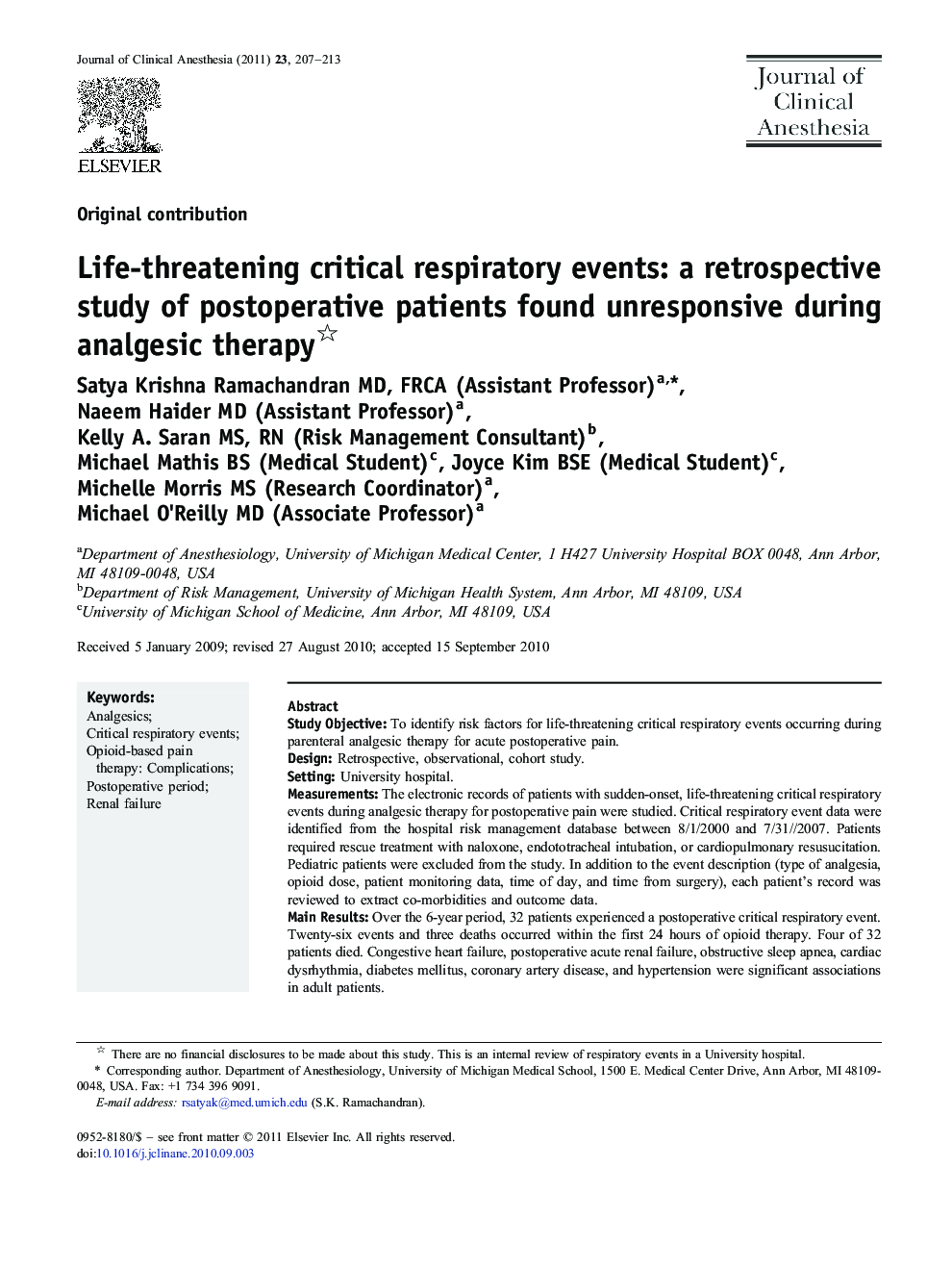| Article ID | Journal | Published Year | Pages | File Type |
|---|---|---|---|---|
| 2762802 | Journal of Clinical Anesthesia | 2011 | 7 Pages |
Study ObjectiveTo identify risk factors for life-threatening critical respiratory events occurring during parenteral analgesic therapy for acute postoperative pain.DesignRetrospective, observational, cohort study.SettingUniversity hospital.MeasurementsThe electronic records of patients with sudden-onset, life-threatening critical respiratory events during analgesic therapy for postoperative pain were studied. Critical respiratory event data were identified from the hospital risk management database between 8/1/2000 and 7/31//2007. Patients required rescue treatment with naloxone, endototracheal intubation, or cardiopulmonary resusucitation. Pediatric patients were excluded from the study. In addition to the event description (type of analgesia, opioid dose, patient monitoring data, time of day, and time from surgery), each patient's record was reviewed to extract co-morbidities and outcome data.Main ResultsOver the 6-year period, 32 patients experienced a postoperative critical respiratory event. Twenty-six events and three deaths occurred within the first 24 hours of opioid therapy. Four of 32 patients died. Congestive heart failure, postoperative acute renal failure, obstructive sleep apnea, cardiac dysrhythmia, diabetes mellitus, coronary artery disease, and hypertension were significant associations in adult patients.ConclusionsThe first 24 hours after commencing opioid-based analgesic therapy represents a high risk period. Obstructive sleep apnea, deep levels of sedation, nocturnal presentation, and postoperative acute renal failure were seen in patients who died as a result of these critical respiratory events.
